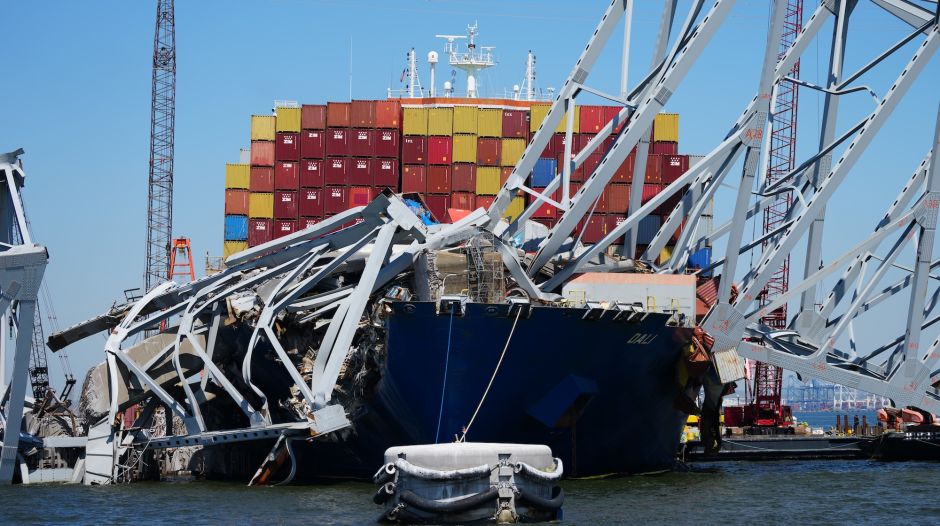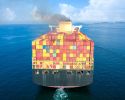New Concept Could Help Prevent Blackouts

A common reason for power system failures is wear on cables or degradation of insulation over time. By measuring small, partial discharges in the system and analyzing the data using AI, it’s possible to detect issues early and thus prevent accidents. This is the conclusion of a new pre-study from Lighthouse and the Swedish Transport Administration.
In March last year, while departing Baltimore, the container ship M/S Dali crashed into the massive Francis Scott Key Bridge, causing it to collapse. The accident, which claimed six lives and caused hundreds of millions of dollars in damage, was triggered by a blackout (total power failure) on the 300-meter vessel. One of the most common causes of electrical power system failure is wear and degradation of insulation.
"The industry has long tried to understand why power outages occur. Whether it's a land-based system or one onboard a ship, the setups are quite similar—with cables, generators, motors, breakers, and switchboards. Over time, these components wear down for various reasons. One way to detect problems early is to monitor partial discharges. By measuring current and voltage, it’s possible to identify these small discharges before they escalate into major failures, enabling preventive actions," says Lucas Finati Thomée, one of the authors of the study On Predictive Maintenance for Maritime Sector Using AI-Based Analysis of Partial Discharge.
Due to the harsh operational conditions at sea—such as high humidity, saltwater exposure, and constant mechanical stress—onboard electrical systems are subject to extreme strain, making them particularly vulnerable to degradation. Added to this is the isolation at sea: if a cable fails, there might be no immediate way to replace it—and in the worst case, it may be impossible to reroute power from another source. This makes early detection and intervention especially critical on ships.
"Measuring partial discharges isn’t new in itself. What’s new is how we’re using AI and machine learning to interpret the data—to understand where the discharges occur, what causes them, and how they evolve over time. It’s this application in a maritime context that we’ve focused on, and that’s where the innovation lies," says Lucas Finati Thomée.
The results from the study show that the concept, tested in theory, can be applied to existing systems, and the potential economic benefits are significant—especially since the consequences of a blackout can be extremely costly. In addition, the AI solution is relatively simple and inexpensive to implement.
"Of course, there are challenges. Personnel will need training to use the systems, and there also needs to be a general awareness that this is something worth investing in."
The next step in the process is hopefully a pilot project where the concept can be tested in a real-world environment.
"We are currently in discussions with several shipping companies that are interested. Once we start testing on vessels, we will likely discover new challenges we hadn’t anticipated," says Lucas Finati Thomée.
The pre-study On Predictive Maintenance for Maritime Sector Using AI-Based Analysis of Partial Discharge was conducted within the Swedish Transport Administration’s Sustainable Shipping industry program, led by Lighthouse. It was authored by Ebrahim Balouji (EcoPhi/Chalmers) and Lucas Finati Thomée (DNV).
-
 DNV: Metanol är ett moget alternativt bränsle
DNV: Metanol är ett moget alternativt bränsle -
 Se Hållbar sjöfarts uppsamlingsheat
Se Hållbar sjöfarts uppsamlingsheat -
 NextWave – en podd som ska locka unga
NextWave – en podd som ska locka unga -
 Ny studie: Eldrivna pendelbåtar kan effektivisera Stockholms kollektivtrafik
Ny studie: Eldrivna pendelbåtar kan effektivisera Stockholms kollektivtrafik -
 Sjöfartens utsläpp ökar
Sjöfartens utsläpp ökar -
 Sociala relationer påverkar val av bränsle
Sociala relationer påverkar val av bränsle -
 Sjöfartens omställning kräver ”mjukare” påtryckningar
Sjöfartens omställning kräver ”mjukare” påtryckningar -
 Hon hade avtalad tid med Kapten ynkrygg
Hon hade avtalad tid med Kapten ynkrygg -
 Lighthouse omvärldsanalys 2025 – osäkerhet och tullar präglar sjöfarten
Lighthouse omvärldsanalys 2025 – osäkerhet och tullar präglar sjöfarten -
 Se seminariet Shipping in the Marine Environment
Se seminariet Shipping in the Marine Environment

